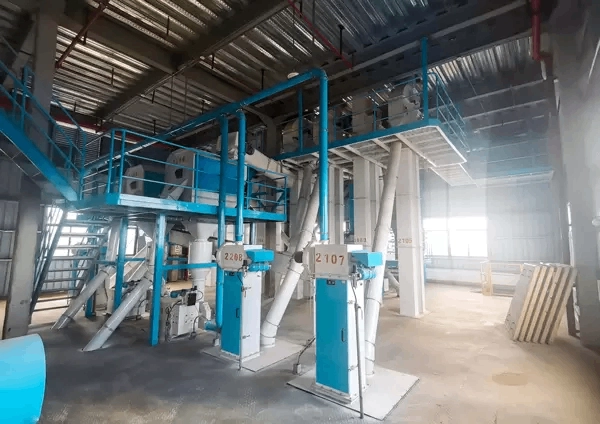With the development of modern breeding industry, poultry feed production line has become an important equipment to improve production efficiency and product quality. However, an important issue for investors and farmers is the energy consumption of poultry feed production lines. This article will explore whether poultry feed production lines have high energy consumption and the factors that affect energy consumption.
The energy consumption of the poultry feed production line mainly includes electricity consumption, gas consumption and water consumption. Due to the high degree of automation of the production line, the energy consumption of the poultry feed production line is lower compared to the traditional manual production method. However, the specific energy consumption situation also needs to consider factors such as the scale, configuration and operating efficiency of the production line.

Equipment energy efficiency: The equipment energy efficiency of the poultry feed production line is one of the important factors affecting energy consumption. Efficient equipment can improve production efficiency and reduce energy consumption.
Production line configuration: The configuration of the production line will also have an impact on energy consumption. Reasonable configuration can reduce energy waste and improve energy consumption efficiency.
Production scale: The size of the production scale will also have an impact on energy consumption. Typically, large-scale production lines have relatively low energy consumption because they can achieve higher production efficiency and resource utilization.
Operation management: Good operation management can reduce energy consumption. Reasonable production planning, equipment maintenance and energy management can reduce energy waste.
In order to reduce the energy consumption of poultry feed production lines, the following measures can be taken:
Optimize equipment configuration: According to production needs and energy consumption, rationally configure equipment to reduce energy waste.
Improve equipment energy efficiency: Choose efficient equipment to improve the energy efficiency level of the equipment and reduce energy consumption.
Optimize production plans: Arrange production plans rationally to avoid inefficient production processes and reduce energy waste.
Strengthen energy management: Establish a scientific energy management system to monitor and control energy usage and reduce energy waste.
Train employees: Strengthen employee training, improve their awareness of energy management, and reduce energy waste.
Taking into account factors such as equipment energy efficiency, production line configuration, production scale and operation management, the energy consumption of poultry feed production lines is relatively low. However, in order to further reduce energy consumption, a series of optimization measures need to be taken, such as optimizing equipment configuration, improving equipment energy efficiency, optimizing production plans, strengthening energy management and training employees. Through the implementation of these measures, the energy consumption of poultry feed production lines can be effectively reduced and energy utilization efficiency improved.
To sum up, the poultry feed production line consumes less energy than the traditional manual production method. However, in order to further reduce energy consumption, a series of optimization measures need to be taken. When choosing poultry feed production lines, investors and farmers should comprehensively consider factors such as equipment energy efficiency, production line configuration, production scale, and operation management to optimize energy consumption. At the same time, strengthening energy management and training employees are also important means to reduce energy consumption. Only through comprehensive measures can the energy consumption of the poultry feed production line be optimized and contribute to the sustainable development of the breeding industry.